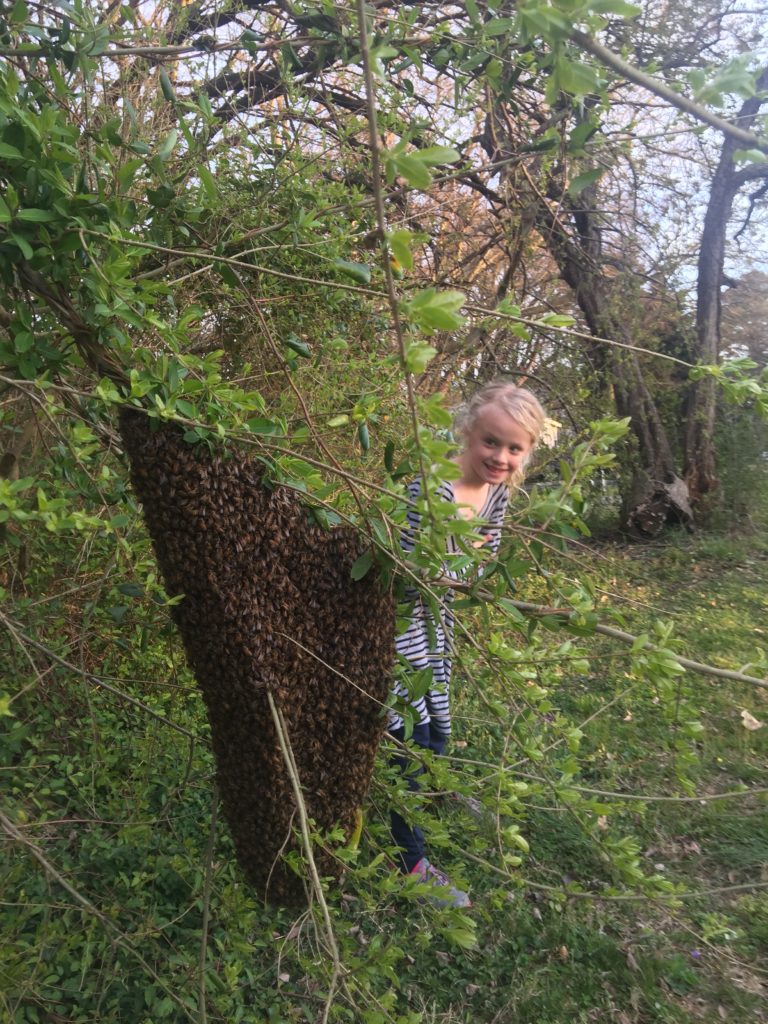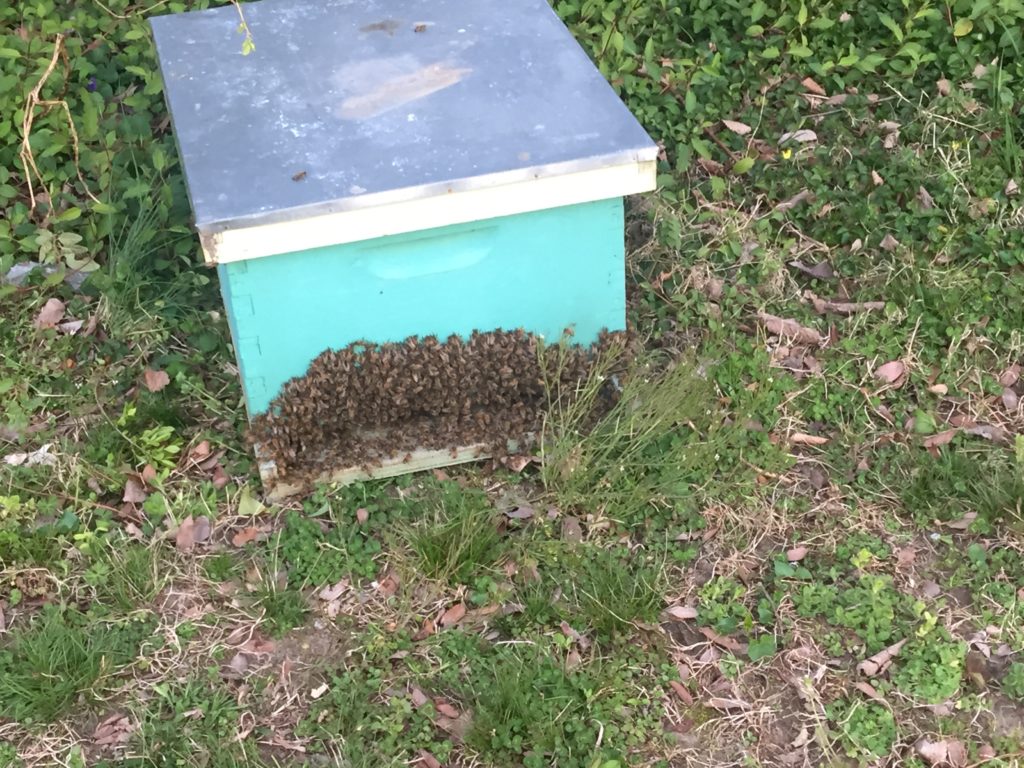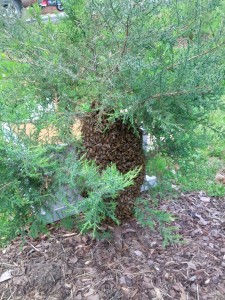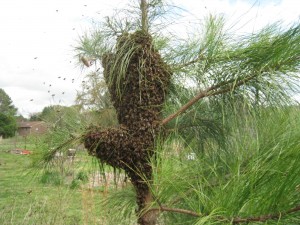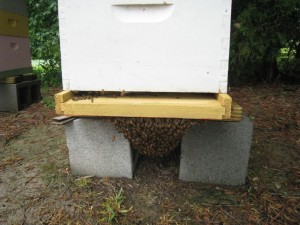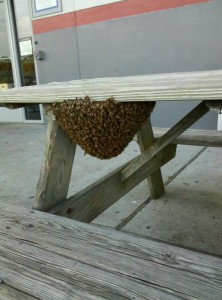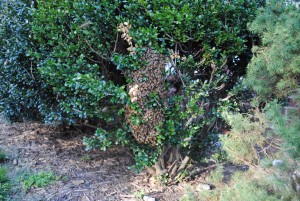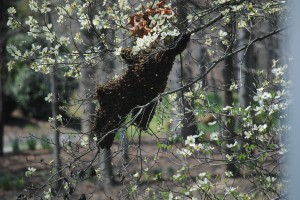Bring Your Snippers on a Swarm Call

When I originally published this post, it was late at night and (in retrospect) I was not very informative about any of it! So, I have decided to revise it a bit and maybe review how I tackle a swarm.
When I get a swarm call, the first thing that I do is ask for a picture. In the early Spring (right now), I really do not have much risk, but as the days get warmer, it is not uncommon to have someone report a bee swarm that ends up being hornets or wasps/yellow jackets. So, when it does get warmer, I pretty much require a pic before I go about gathering the equipment and making the trek out to collect them!
Catching a swarm of bees is fairly simple, assuming their location is accessible. My main goal is to bring a Deep hive body (sometimes, although rarely, I bring a Nuc box) with 10 frames. Ideally, I would like the frames to be mostly foundation (and I sometimes do it with all 10 frames being foundation.) Swarms tend to really draw out comb, so I like to give them plenty of space to do that. Fresh, new comb is the best.
Once I get to the location, I set the box up on the ground, beneath the swarm. My goal is to shake (literally) the bees into the box. I will remove about 6 frames from the center, before I do the shaking, to provide a “hole” for the bees to plop into. Once they are in the box, I gently (but fairly quickly) put the removed frames back into the box and put a top on them. 90% of the time, the bees are “hived”, as they say, right then.
The key is the queen. When you shake the bees, a lot of bees fly into the air and some might even remain on the limb you did the shaking from. There is always a chance that the queen is not in there (which is a problem for me – I do NOT requeen a swarm.) I can normally tell by the way the bees are acting on the landing board – typically, when I have the queen, lots of bees will come out to fan outward, shooting the scent into the air to advertise that this is where the queen and everyone is, come on home. I also see bees actively moving INTO the hive. These are all good signs (although not guarantees) that I have the queen.
At this point, I almost always leave the box on the ground to come back and get them that evening. Once I tape them up and get them to their new home, I immediately (it will be night) open them back up so that they may immediately start flying when the sun comes up. This is a fairly good review of how I get her done. Very, very rarely, I will come back to pick them up and find no bees in the hive. This doesn’t even happen once a year (it didn’t happen last year), but it does happen. A lot of folks take precautions to prevent the bees from leaving.
The above video was an atypical swarm – I usually can get the swarm with my feed on the ground. In addition, I mistakenly grabbed the wrong deep which sucks (this deep was mainly for Nuc creation – I like to replace frames that I take from the mother hive with drawn frames this time of year). Regardless, the bees were hived and are now. The snips made all the difference in the world on this swarm call – it’s a tool I take with me on all calls:)

